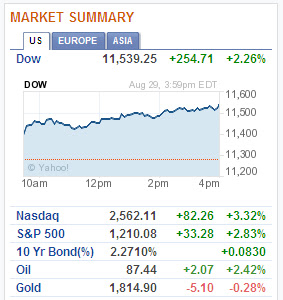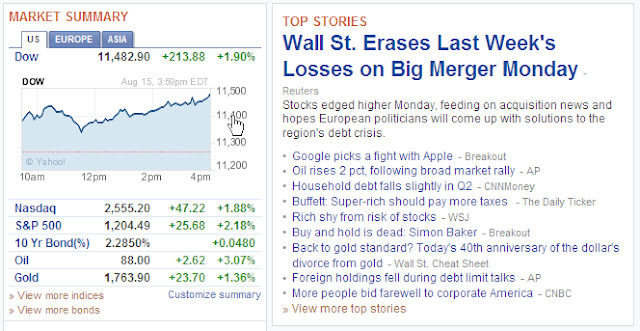NEW YORK (Reuters) - Fear returned to Wall Street on Wednesday, sending the S&P 500 to another 4 percent decline, triggered by worries that Europe's debt crisis could engulf French banks and spill onto the U.S. financial sector.
Trading was once again marked by sharp moves on heavy volume. For a fifth straight day, the Dow industrials fluctuated in a range of more than 400 points.
"What you're seeing is a very short-term, direction-oriented market," said Eric Kuby, chief investment officer of North Star Investment Management Corp in Chicago.
Worries about the strength of French lenders, including Societe Generale, triggered a selloff in European and U.S. banks. Rumors about SocGen's financial health, which the bank denied, sent its shares tumbling 14.7 percent.
An index of European banks dropped 6.7 percent and the KBW index of U.S. bank stocks slid 4.9 percent as fear grew of a possible contagion of any French crisis. Bank of America Corp lost 10.9 percent to $6.77 and Goldman Sachs slid more than 10 percent to $110.34.
The Dow Jones industrial average lost 519.83 points, or 4.62 percent, to 10,719.94. The S&P 500 fell 51.77 points, or 4.42 percent, to 1,120.76. The Nasdaq Composite dropped 101.47 points, or 4.09 percent, to 2,381.05.
Wednesday's drop came a day after stocks rallied on the Federal Reserve's pledge to keep interest rates near zero for at least two more years.
Even after Tuesday's snap-back rally, the S&P 500 is down almost 18 percent from its 2011 closing high set April 29.
The losses came against the backdrop of recent weak U.S. economic data, the United States losing its triple-A credit rating from Standard & Poor's and the inability of lawmakers to address worries that another recession may be on the way.
















































